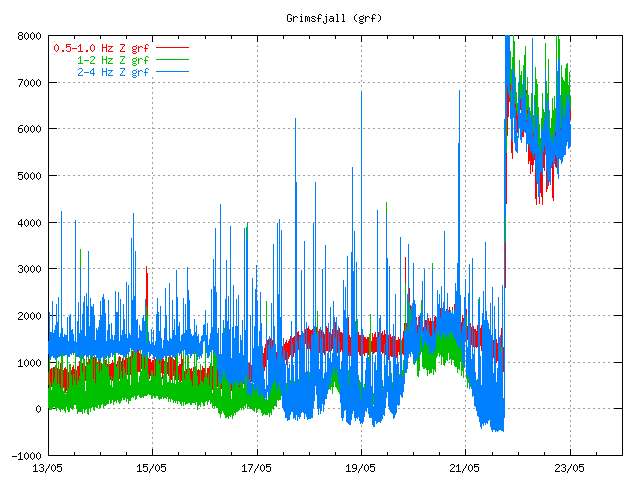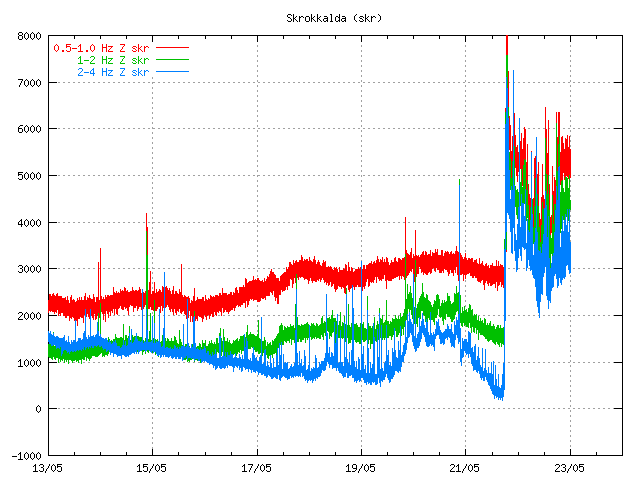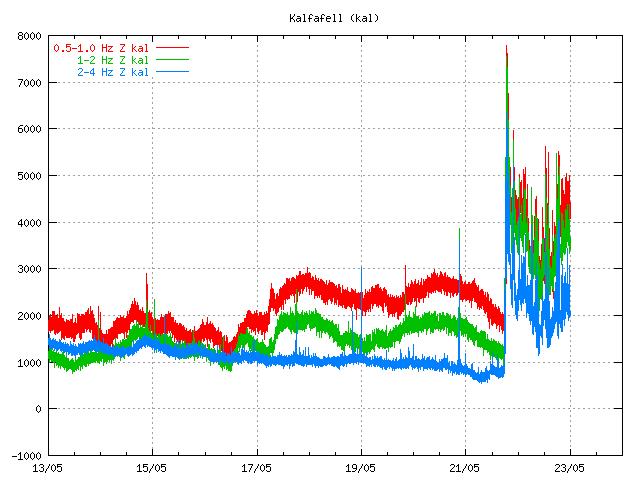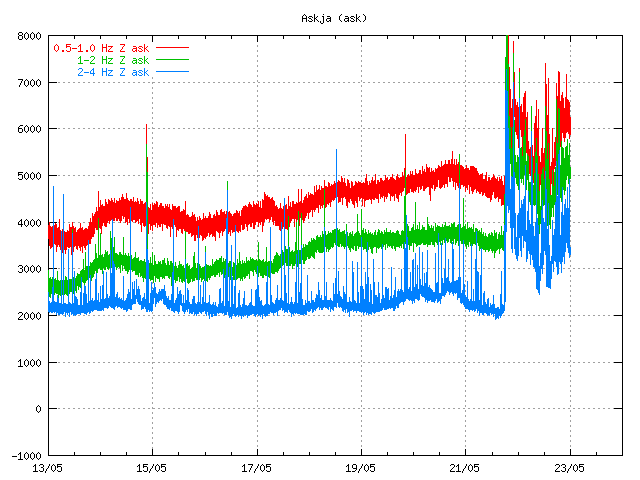Here is the second update today of the Grímsfjall volcano. But it is also known as Grímsvötn.
Process of the eruption: The eruption has not changed a lot since this morning. But its power has dropped a little bit since it started yesterday. But there also seems to be the case that this eruption increases on regular basis. But it is impossible to know for how long that eruption pattern is going to continue in Grímsfjall volcano. Early estimates of this eruption (reported by the news in Iceland) is that this eruption is about 10 times bigger then the eruption in Eyjafjallajökull volcano. But that is a early estimate and is a subject to a change. But in general there is nothing to suggest that this eruption is slowing down, even if it does not have the same power as it did in the first few hours of eruption.
Ash cloud: The ash cloud has dropped a little from it’s high of 20 km. Current measurements place the hight of the ash cloud around 15 to 18 km high up. Reports say that the lowest point was around 10 km, before the ash cloud did get higher again. Update 1: There have been recorded over 15,000 lightnings in this eruption alone. But they where recording 2198 lightning in 1 hour since the eruption started. News about it can be found here (Icelandic, picture). Update 2: The ash cloud is now from 10 to 20 km high. But it depends on the power of the eruption. But that seems to change over time and does not remain a constant.
Earthquakes: So far, most of earthquake activity in Grímsfjall volcano has stopped. But that suggest that the magma now has a clear path to the surface. There has been some earthquake activity in Hamarinn volcano. But it is unclear if that is connected to the eruption in Grímsfjall volcano.
Other: It is dangerous to go into the ash cloud. The government has closed off part of road one due the ash cloud. People how find them self in the ash cloud should find a shelter soon as possible, or of they are inside a house they should remain there. Reports are of communication problems where the ash clouds goes over due to static charge in it. This interferes with GSM, 3G phones, radios and tv receptions. In worst cases people can not expect a reception of any radio signal where the ash cloud is most dense.
Sorry for lack of links. I do not have the time to post them into this blog post.
Please note that information here might get outdated really fast and with no warning at all!
Updated at 16:17 UTC.
Updated at 16:26 UTC






